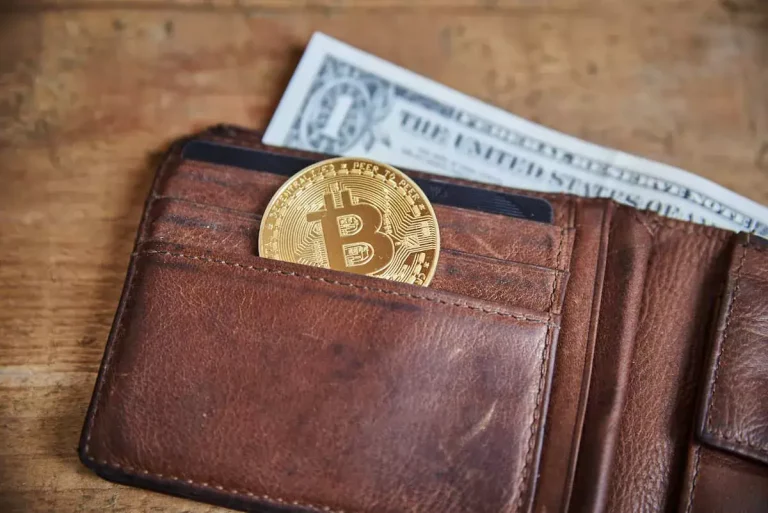Furthermore, the classification of crypto property can influence their remedy under tax laws and different regulatory frameworks. Without a clear classification system in place, it becomes difficult for authorities to determine tips on how to regulate and tax these belongings effectively. For example, some classification frameworks classify crypto belongings primarily based on their underlying blockchain technology, distinguishing between belongings constructed on Bitcoin, Ethereum, or other blockchains. Others concentrate on the regulatory standing of the asset, categorizing them as absolutely compliant securities, unregulated commodities, or one thing in between. These frameworks present Commodity vs Security Why It Matters For Crypto a more nuanced understanding of the varied crypto asset landscape. In Part 202, CLARITY incorporates lots of the disclosure gadgets identified by the SEC’s Division of Corporation Finance for subject crypto property, applying them to digital commodity issuers using the brand new Section 4(a)(8) exemption.
They’re used beyond digital money as a part of software applications that may serve quite a lot of capabilities. Any time an individual buys or spends cryptocurrency, she or he authorizes the movement of that exact asset from one location to the opposite. What makes cryptocurrency so distinctive is that it’s not issued by a government, maintaining it out of the realm of politics and control.
Is Crypto A Safety Or Commodity? The Talk Continues Into 2024
But, the complexities concerned in shaping these laws, coupled with a divided Congress, counsel that any vital changes could unfold incrementally, rather than through sweeping reforms. Whereas the CLARITY Act represents a critical and complete try to rationalize crypto market regulation, its definitional and structural innovations raise as many questions as they answer. The invoice makes commendable progress in outlining disclosure necessities and acknowledging the unique characteristics of blockchain-based belongings. However, its introduction of a novel exemption, reliance on ambiguous decentralization concepts, and devolution of disclosure responsibilities to exchanges risk creating gaps in investor protection and regulatory consistency. A simpler method could be to simplify asset classification, avoid unworkable decentralization thresholds, and guarantee sturdy disclosures via the SEC or a well-structured self-regulatory framework. As Congress considers how greatest to regulate crypto markets, it should prioritize regulatory readability not solely in name however in practice—anchored in long-standing investor protection principles that remain related, even in the face of technological change.
This test units forth standards similar to an funding of money, a reasonable expectation of income predominantly from the efforts of others, and the presence of a standard enterprise. Yet, the appliance of this take a look at to the mercurial, decentralized nature of cryptocurrencies stays a subject of fiery debate and case-by-case analysis. On the opposite hand, the classification of crypto property also presents opportunities for innovation and progress in the digital asset area. Clear and constant classification frameworks can provide clarity for market members, which can help foster larger adoption and funding in the crypto market.
So the key is to adapt, keep educated, and control how these classifications evolve. Classifying crypto as a safety offers investor protections but additionally topics the whole asset class to stricter regulations, affecting every thing from registration requirements for exchanges to investor information. The line drawn between commodities buying and selling and securities laws has a major bearing on the regulatory approach towards cryptocurrencies. Securities are investments like shares, bonds, and other interests in firms, whereas commodities involve the acquisition of natural resources or agricultural merchandise upfront of supply.
The current situation within the US, with the SEC and CFTC seemingly vying for control, raises issues. Whereas their acknowledged aim is shopper safety, their actions generally appear more targeted on jurisdictional enlargement than collaborative regulation. The crypto enterprise has usually expressed a need for a much less prescriptive regulatory methodology, claiming that overregulation could stifle innovation and hinder the enlargement of the business. A big issue was the rise of Preliminary Coin Decisions (ICOs), the place crypto initiatives, along with Ethereum, raised funds by providing tokens to merchants. ICOs resembled standard Preliminary Public Choices (IPOs) however with a crypto twist. The SEC, involved about investor dependence on third events for token appreciation, took uncover.
The Boundaries Of Readability: Disclosure, Classification, And The Trail Ahead For Crypto Legislation

The SEC’s stance that ICOs could be securities choices, together with funding contracts, necessitates both registration or an exemption, ensnaring corporations in an internet of legal and financial risks if they fail to conform. The challenges are manifold, from unfulfilled promises Cryptocurrency exchange and vulnerability to hacks to prevalent fraud allegations, all of which account for a significant portion of the SEC’s enforcement actions. The Worldwide Financial Fund (IMF) has updated its steadiness of funds standards to mirror the growing role of digital assets. For the first time, cryptocurrencies like Bitcoin (BTC) are being formally recognized in world financial reporting. The impression of institutional adoption on crypto asset classification is critical in shaping the general panorama of the cryptocurrency market.
The situation becomes more complicated as these businesses are rising their enforcement actions. After high-profile incidents like the FTX collapse, regulators are pushing for stricter compliance from crypto corporations. Cryptocurrencies like Bitcoin are thought-about commodities by the Commodity Futures Buying And Selling Fee (CFTC) quite than securities. Laws may thus require that all information disclosed in reference to the exempt offering—along with supplemental token-specific disclosures—be made publicly available by any change looking for to listing the token.

I disagree with this authorized reasoning and addressed it in my assertion to the SEC’s Crypto Task Drive. I emphasized the distinction between the “subject” of an funding scheme and the safety itself, which is merely the mechanism for investor participation. In Howey, no one received the promised earnings just by buying orange groves; it was the issuer’s efforts that generated returns. In cryptocurrency offerings https://www.xcritical.in/, issuers usually “promise profits” by taking actions that affect the token price—making the revenue expectation inseparable from the token. In this context, the token embodies the promise, and the issuer’s ongoing efforts fulfill it.
The classification debate grows more and more fascinating as we delve into particular cryptocurrencies similar to Bitcoin and Ethereum. Their unique characteristics and makes use of have sparked intense discussions about their monetary worth and proper classification. These evolving regulatory proposals goal to strike a steadiness between fostering innovation in the digital asset area and ensuring shopper safety. They additionally tackle illicit finance risks that might probably arise from the misuse of cryptocurrencies. Notably, this definition allows an asset to be classified as a “digital commodity” even if a centralized entity continues to perform important managerial functions.
- Commodities are fundamental uncooked supplies, corresponding to oil or gold, which might be traded, while securities involve buying monetary devices representing worth, like shares or bonds.
- This background supplies me with a unique vantage level on the evolving world of cryptocurrencies, particularly in the context of their classification as securities or commodities.
- Thus, tokens supplied in ICOs usually conform to the frequent enterprise requirement of the Howey Check, making them likely to be categorised as securities.
- Investors usually react to regulatory developments by adjusting their portfolios, which can lead to sharp price movements and market fluctuations.
This article goals to elucidate the differences between securities and commodities while delving into the ongoing discussion surrounding the appropriate classification of cryptocurrencies. Classifying cryptocurrencies and digital property as commodities or securities issues as a result of it decides how they get regulated. Regulators are working to create higher laws that match the completely differing types of digital property in the marketplace. The Howey Test’s software casts a protracted shadow over the crypto industry, influencing regulatory status and necessities. When transactions like Ripple’s XRP token or ICOs come into focus, the result of the take a look at can both smooth the path in path of regulatory adherence or steer it into a labyrinth of authorized dilemmas.


Leave A Comment